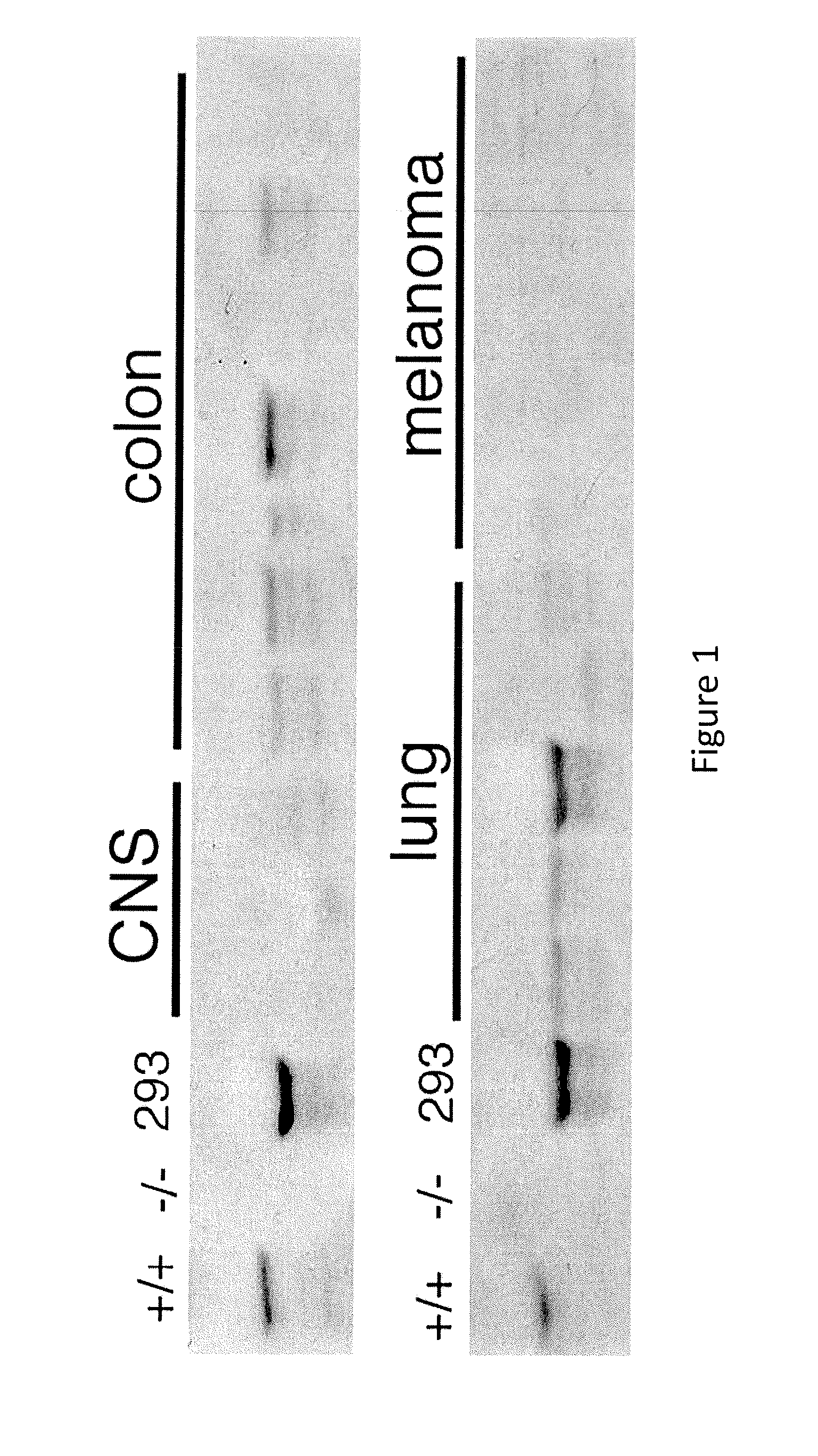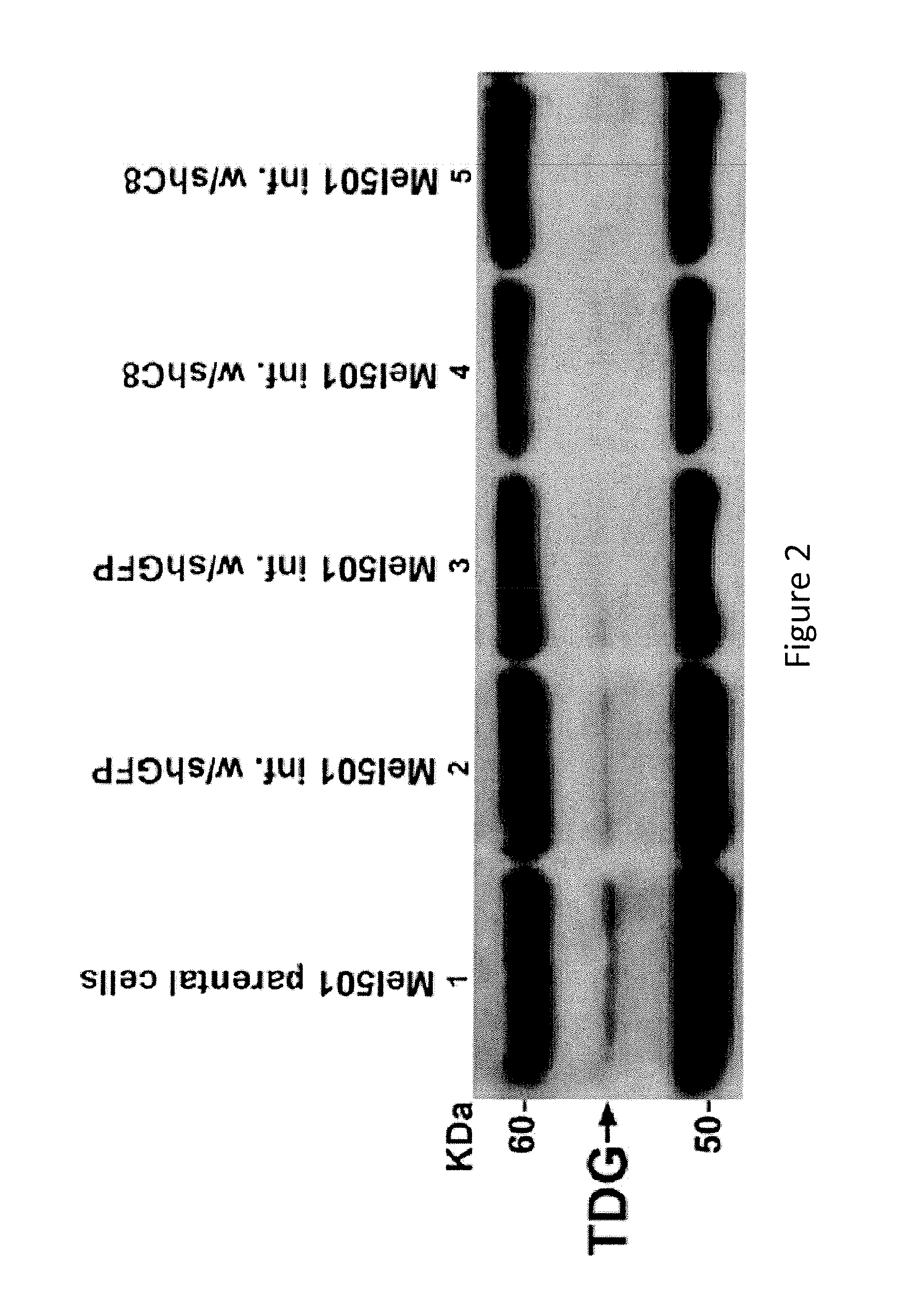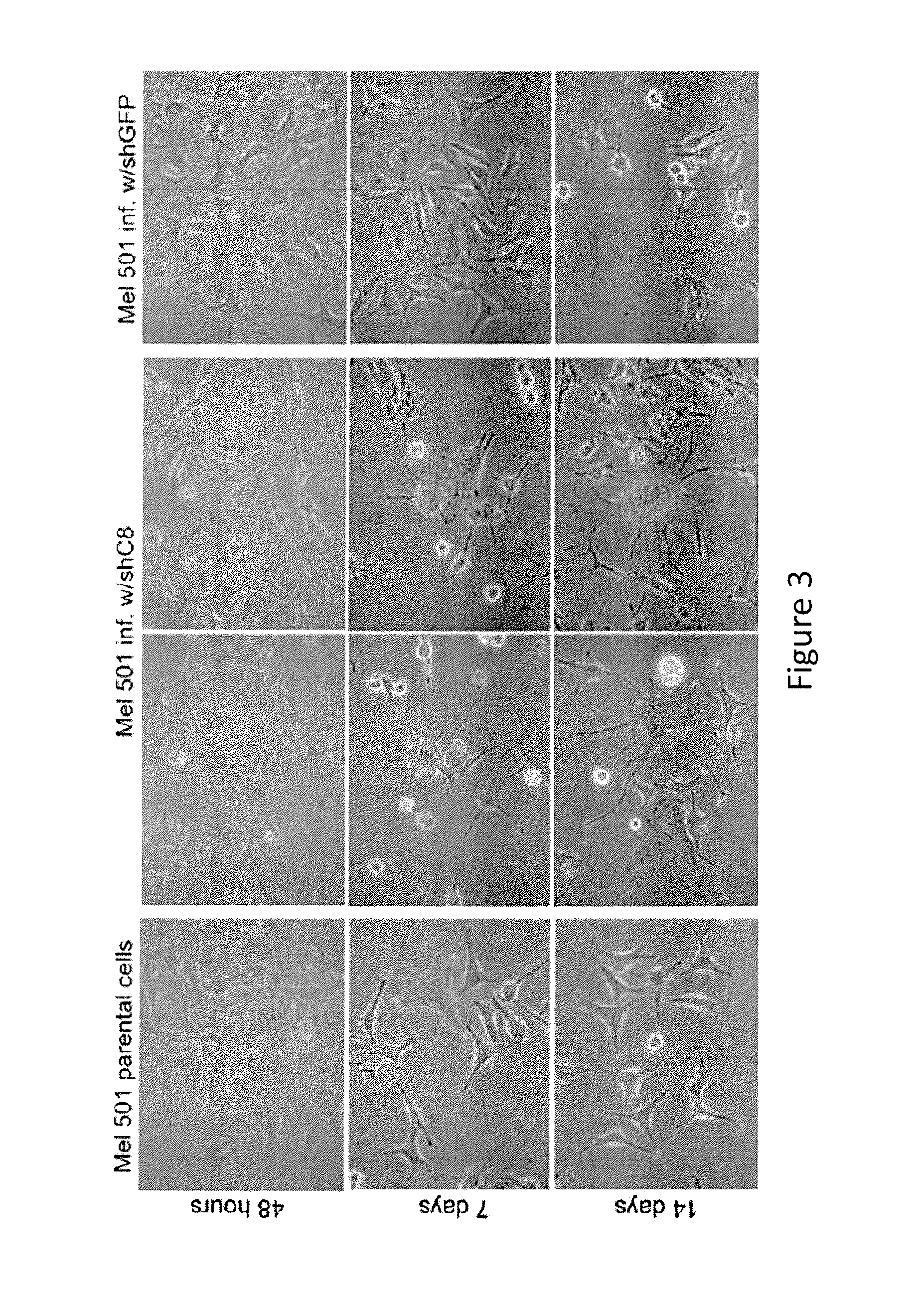Inhibition of Thymine DNA Glycosylase in the Treatment of Cancer
a technology of thymine dna glycosylase and cancer, which is applied in the field of cancer treatment, can solve the problems that the effective treatment of melanoma is still lacking for the entire population and for a longer period of time, and achieves the effect of inhibiting the biologic activity of tdg
- Summary
- Abstract
- Description
- Claims
- Application Information
AI Technical Summary
Benefits of technology
Problems solved by technology
Method used
Image
Examples
example 1
Reduced TDG Expression in Melanoma Cells
[0109]Because G:T and G:U repair systems are generally effective in protecting cells from spontaneous mutagenesis, it was hypothesized that inactivating mutations of TDG may accelerate the accumulation of these types of mutation in certain cancer genes. In preliminary evaluations, it was observed that TDG expression is frequently reduced or absent in certain cancer cell lines, particularly with respect to melanoma (FIG. 1). From these results, it was hypothesized that reducing the levels of TDG in melanoma cells would increase their tumor forming ability. As the Examples below illustrate, however, reducing TDG levels in melanoma cells not only did not increase their tumor forming ability, it reduced their growth and induced differentiation toward a healthy phenotype.
example 2
Knockdown of TDG in Melanoma Cells that Express High Levels of TDG
[0110]The base excision repair thymine DNA glycosylase (TDG) has a dual role in prevention of mutations that may originate from deamination of 5-methylcytosine and in transcriptional regulation. Based on work on TDG knock-out mouse embryos, whose phenotypes suggested an involvement of neural crest cells, the precursors of melanocytes, and the fact that melanoma cell lines were observed to have low levels of TDG proteins, it was hypothesized that modulation of TDG levels may affect the biology of melanoma.
[0111]Initial experiments demonstrated that downregulation of TDG levels in Mel501, a melanoma line characterized by high endogenous levels of TDG, caused reduced growth and induced characteristic morphological changes. As explained below, upon shTDG silencing, Mel501 cells lost the typical spindle shape to present higher quantities of cellular processes resembling dendrites, a characteristic of melanocytes, oligodend...
example 3
Knockdown of TDG in Melanoma Cells that Express Intermediate Levels of TDG
[0114]In Example 2 above, the data show that downregulation of TDG levels in Mel501, a melanoma cell line characterized by high endogenous levels of TDG, caused reduced proliferation and induced characteristic morphological changes such as the appearance of dendrites, which are cellular processes characteristic of melanocytes, oligodendrocytes, astrocytes, and neurons. Follow-up experiments were conducted in a second melanoma cell line, which expresses intermediate levels of TDG, or in any event, lower levels of TDG relative to Mel501 cells. These experiments, conducted in MULL cells, showed similar results to those observed as part of the experiments of Example 2.
[0115]MULL cells were infected with a sh lentivirus specific for TDG, named shC8, and parallel MULL cell cultures were infected with an empty vector control lentivirus, named shPLKO. Stable cell lines expressing each lentivirus were selected using th...
PUM
| Property | Measurement | Unit |
|---|---|---|
| size | aaaaa | aaaaa |
| morphology | aaaaa | aaaaa |
| composition | aaaaa | aaaaa |
Abstract
Description
Claims
Application Information
 Login to View More
Login to View More - R&D
- Intellectual Property
- Life Sciences
- Materials
- Tech Scout
- Unparalleled Data Quality
- Higher Quality Content
- 60% Fewer Hallucinations
Browse by: Latest US Patents, China's latest patents, Technical Efficacy Thesaurus, Application Domain, Technology Topic, Popular Technical Reports.
© 2025 PatSnap. All rights reserved.Legal|Privacy policy|Modern Slavery Act Transparency Statement|Sitemap|About US| Contact US: help@patsnap.com



